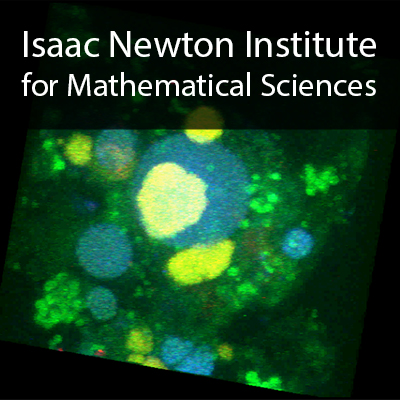Plenary Lecture 15: Geomicrobial kinetics: bridging the gap between laboratory and nature
34 mins 57 secs,
140.15 MB,
WebM
640x360,
29.97 fps,
44100 Hz,
547.5 kbits/sec
Share this media item:
Embed this media item:
Embed this media item:
About this item

| Description: |
Jin, Q (University of Oregon)
Friday 12 September 2014, 10:05-10:40 |
|---|
| Created: | 2014-09-15 14:54 |
|---|---|
| Collection: | Understanding Microbial Communities; Function, Structure and Dynamics |
| Publisher: | Isaac Newton Institute |
| Copyright: | Jin, Q |
| Language: | eng (English) |
| Distribution: |
World
|
| Explicit content: | No |
| Aspect Ratio: | 16:9 |
| Screencast: | No |
| Bumper: | UCS Default |
| Trailer: | UCS Default |
| Abstract: | Rates of natural microbes are a key parameter of theoretical and practical problems in environmental chemistry, microbiology, and biotechnology. Empirical models, such as the Monod equation, are standard tools for predicting microbial rates in laboratory and industrial reactors. But direct application of these models to natural environments often overestimates the significance and extent of microbial processes by orders of magnitude relative to field observations. Hence new theories and modeling approaches are required for quantifying microbial metabolism in natural environments and for simulating population dynamics of natural communities. The new theory of geomicrobial kinetics must account for dramatic differences in growth conditions between laboratory reactors and natural environments. For example, the energy available in the environment limits the metabolism of natural microbes, which can be described using the thermodynamic potential factor. According to this factor, the thermodynamic control becomes negligible where the available energy is much larger than the energy saved by microbes. But for common anaerobic respiration of natural environments, the thermodynamic control is significant because the available energy is of the same order of magnitude as the saved energy. The new theory also needs to address (1) how microbial diversity controls the rates of microbial metabolism; (2) what metabolic strategies microbes have to employ in natural environments and how these strategies impact microbial rates; and (3) how to integrate mechanisms and kinetics at different scales, from subcellular scale of enzyme kinetics and cellular scale of microbial kinetics to the field scale of watersheds and aquifers and global scale of element cycling. These questions represent current challenges of geomicrobial kinetics, and can be addressed by integrating the exciting advances in genome-scale modeling, microbial ecology, and environmental chemistry. |
|---|---|
Available Formats
| Format | Quality | Bitrate | Size | |||
|---|---|---|---|---|---|---|
| MPEG-4 Video | 640x360 | 1.94 Mbits/sec | 508.77 MB | View | Download | |
| WebM * | 640x360 | 547.5 kbits/sec | 140.15 MB | View | Download | |
| iPod Video | 480x270 | 522.05 kbits/sec | 133.57 MB | View | Download | |
| MP3 | 44100 Hz | 249.79 kbits/sec | 63.97 MB | Listen | Download | |
| Auto | (Allows browser to choose a format it supports) | |||||

